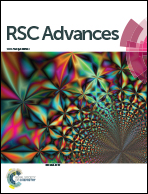Comparison of transport between two bacteria in saturated porous media with distinct pore size distribution
Abstract
The transport of Escherichia coli (1.1 μm) and Klebsiella sp. (1.5 μm) were performed in three porous media with different grain and pore size distributions under saturated flow conditions to explore the coupled effect of porous size distribution and bacteria cell properties on microbial transport. A two-region mobile–immobile model that account for non-uniform transport in porous media was used to quantify the uniformity of bacteria flow pathways. Bacteria flow pathways were more non-uniform compared to those of water tracer for each porous medium. While the non-uniformity of bacteria flow pathways increased with the increasing of the physical heterogeneity of the porous media for Klebsiella sp., no clear tendency was obtained for E. coli. Different behaviors in term of E. coli and Klebsiella sp. cells retention were observed: similar retention rates were obtained in all porous media for the motile E. coli, whereas the non-motile Klebsiella sp. retention decreased in the medium that exhibited larger pores and a wide range of the pore size distribution. These results indicated that bacteria transport and retention were simultaneously dependent to both pore size distribution and bacteria cell properties.


 Please wait while we load your content...
Please wait while we load your content...